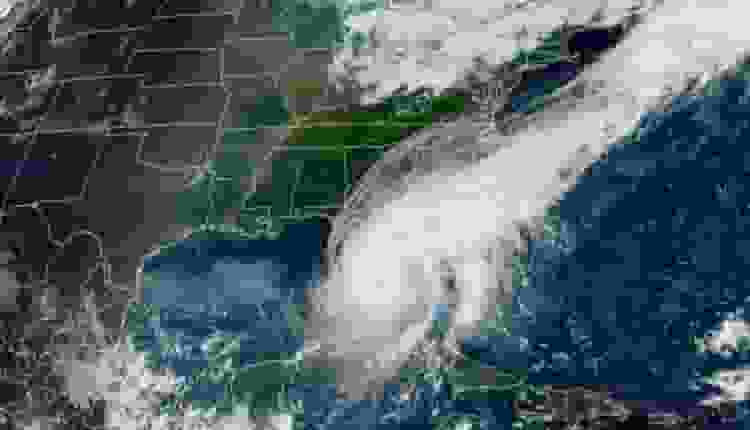
The once-formidable Hurricane Lee now downgraded to a post-tropical cyclone, made landfall in Nova Scotia, bringing significant rainfall and strong winds.
This event marked a transition from a Category 1 hurricane to a post-tropical storm, but the impact remained considerable.
From Hurricane to Post-Tropical Storm: Lee’s Impactful Landfall in Nova Scotia
The National Hurricane Center reported that Lee, now a post-tropical cyclone, maintained maximum sustained winds of 70 mph, equivalent to tropical storm strength, as it reached western Nova Scotia around 4 p.m. Lee’s center was situated near west Nova Scotia.
It was projected to continue across Atlantic Canada, much like a typical nor’easter.
While conditions in New England began to improve, eastern Maine remained under the influence of Lee.
The region experienced strong wind gusts and persistent rainfall that was expected to persist through the evening before tapering off around midnight.
Tropical storm warnings remained in effect for portions of Maine, Nova Scotia, and New Brunswick, Canada.
The storm had a particularly negative impact on eastern Maine and western Nova Scotia, with Bangor, Maine, reporting wind gusts of up to 52 mph.
While Lee had lost its hurricane status, it retained its strength, producing hurricane-force winds and widespread rain.
The storm was downgraded to a post-tropical system as it approached Nova Scotia but was still expected to maintain its intensity as it moved through Atlantic Canada.
The impacts of Lee extended beyond wind and rain. Coastal areas along the East Coast experienced rough surf and dangerous rip currents, which were expected to persist into Sunday but gradually diminish.
Read more: NASA Stuns World With Revelations Of Compelling New UFO Evidence
Rip Current Alerts Along the Atlantic Coast and Widespread Power Outages

Authorities issued high-risk rip current alerts from New England to Florida, highlighting the life-threatening conditions along the entire Atlantic coast of the United States.
The storm was also responsible for significant power outages, affecting over 102,000 customers in New England, with more than 93,000 outages reported in Maine, according to PowerOutage.us.
Restoration efforts were underway, but challenges persisted due to the ongoing storm conditions.
By late Saturday night, Lee was projected to exit American territory and continue its path into Atlantic Canada. Winds were expected to decrease from windy to breezy by Sunday morning, with 15-30 mph gusts in New England.
Lee’s impacts were not limited to land, as it generated swells affecting various regions, including the US Virgin Islands, Puerto Rico, Hispaniola, the Turks and Caicos Islands, the Bahamas, Bermuda, the eastern United States, and Atlantic Canada.
These swells posed a significant risk of life-threatening surf and rip current conditions.
In terms of rainfall, Lee was expected to produce amounts ranging from 1 to 4 inches over far eastern Massachusetts, eastern Maine, western Nova Scotia, and New Brunswick, adding to localized flooding concerns in these areas.
As Lee continued its journey into Canada, residents and authorities in affected regions remained vigilant, emphasizing the importance of preparedness and safety measures in the face of the lingering impacts of this formidable post-tropical cyclone.
Read more: Tent Collapse In Suburban Chicago Leaves 26 Injured, 5 In Critical Condition, According To Police

